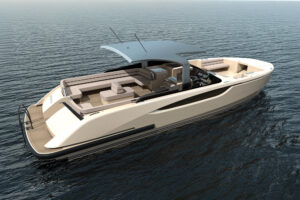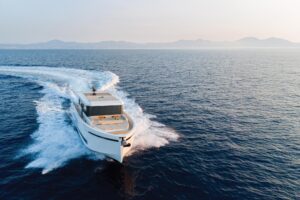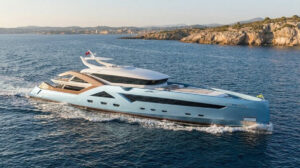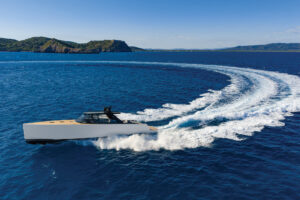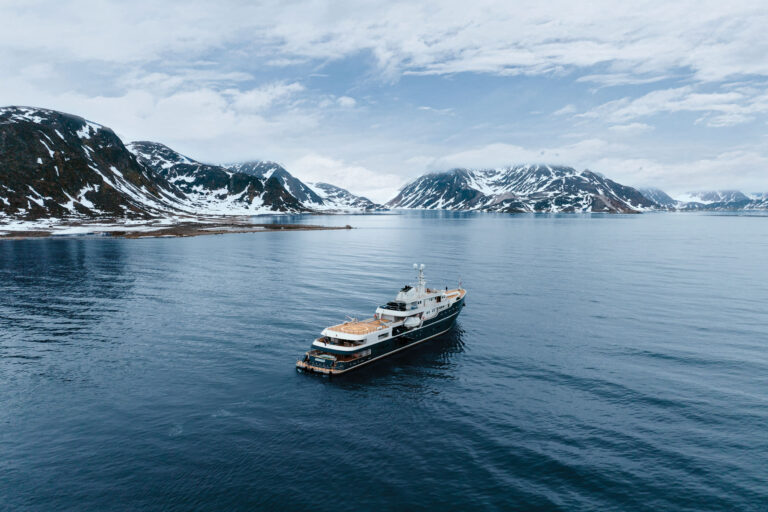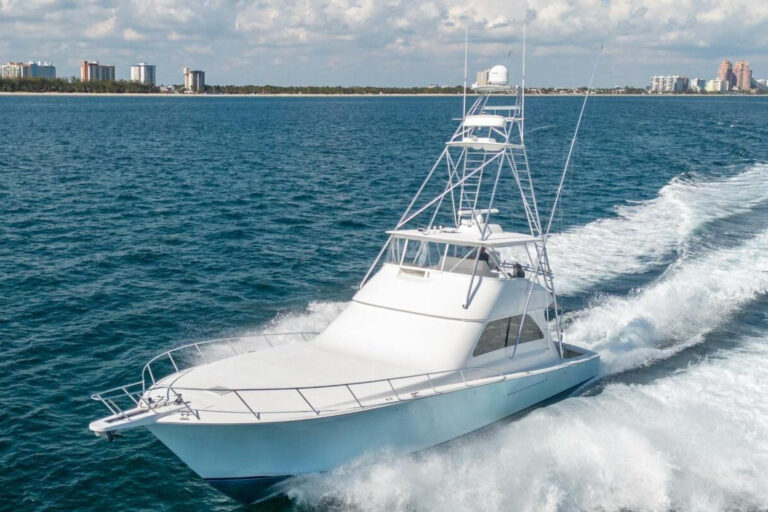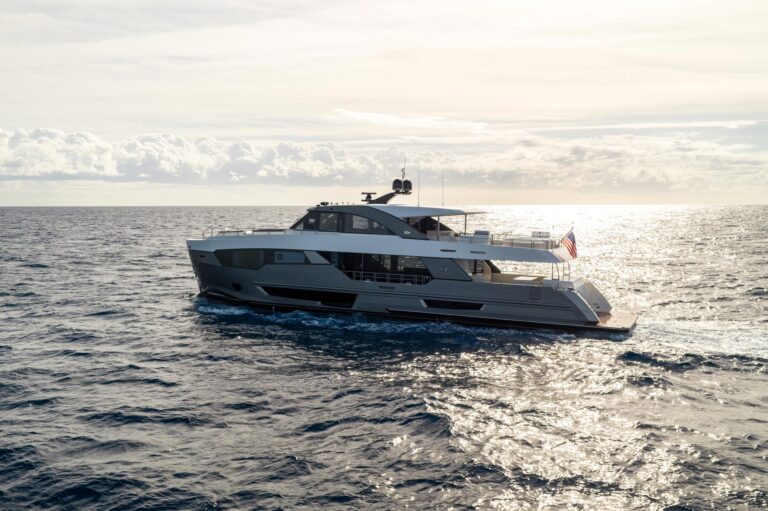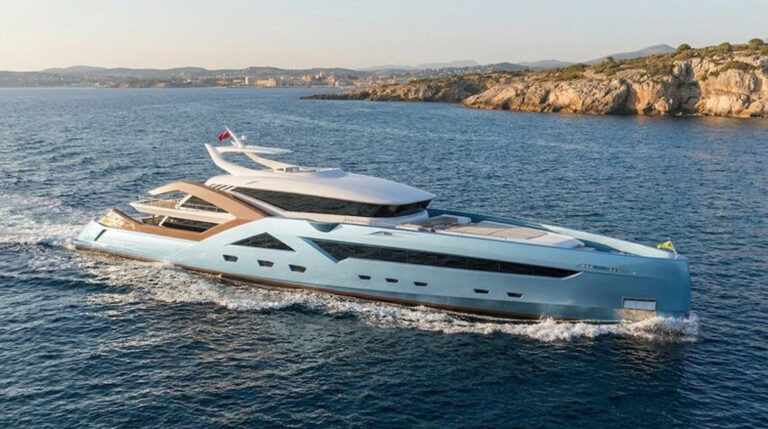
Katama 30
The Katama 30 is more than simply another jet boat. Designer Chris Hood’s research into the current jet boat phenomenon and the designs that have propagated it led him to believe he could do the competition one better. His goal was to design and build a better sea boat than the jets he sampled-faster, lighter in weight, more handsome and less expensive.
The Katama 30’s hull has a very fine entry-almost a delta shape similar to those drawn by Sony Levy more than 40 years ago-but the deadrise is not unusually steep. Convex sections forward warp to flat, or nearly so, amidships and stay that way to the transom. A significant amount of rocker in the first two-thirds of the bottom contributes a lot to this boat’s extraordinarily soft ride at sea.
The Katama 30 has a couple of other things going on below the waterline that are worth mentioning. A shallow fin grows from about station 4 and ends abruptly at station 7. The bottom of the fin follows the logical line of the keel, but the hull sweeps up in a gentle curve. From the fin aft to the transom, Hood drew a delta-shape flat in way of the jet drive’s water intake. The fin gives the 30 exceptional directional stability and prevents skidding in tight turns. The flat creates lift, nearly eliminating the squat most V-hull powerboats exhibit as they accelerate onto plane.
In the Atlantic off Miami, we encountered seas of 3 to 4 feet, but the Katama nearly ignored them. In fact, the faster I drove her (33 knots top), the more comfortable her ride became. She pounded the slightest bit only when I slowed and let her fall off a wave. She dug into the water and clung to her line in turns as though she were a race car.
The hydraulic steering was stiffer than I like, caused by the force of water speeding through the jet’s nozzle. When I asked C.W. Hood Yachts’ Matt Shanley about it, he said the company was going to power-assisted steering on subsequent models. At slow speeds, the helmsman steers with the joystick, which also controls the standard bow thruster.
Going to assisted steering would be the only change I would make to the boat. She is remarkably stiff and solid in a seaway because her interior is molded as a unit and bonded to the hull and deck.
She’s also quiet at speed, thanks in part to her stiffness and in part to conscientious sound damping.
Her interior, with a head, galley and V-berth, seems accommodating enough for a long weekend of cruising. You can’t ask for much more boat in 30 feet. C.W. Hood Yachts, (781) 586-1660; fax (781) 586-1676; info@cwhoodyachts.com; www.cwhoodyachts.com.

